Posted: August 8, 2019
Youth Water Leader OWL Rafting Trip
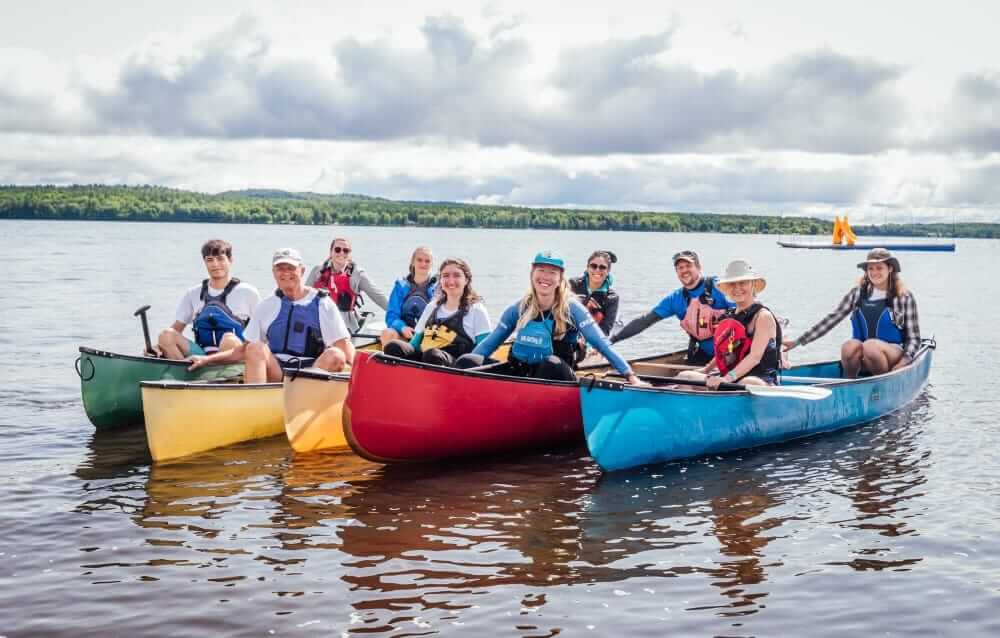
From July 12th to 14th the Youth Water Leaders embarked on a river adventure with OWL rafting to get out and experience the watershed. Written by the Youth Water Leaders, this blog is the story of that trip.
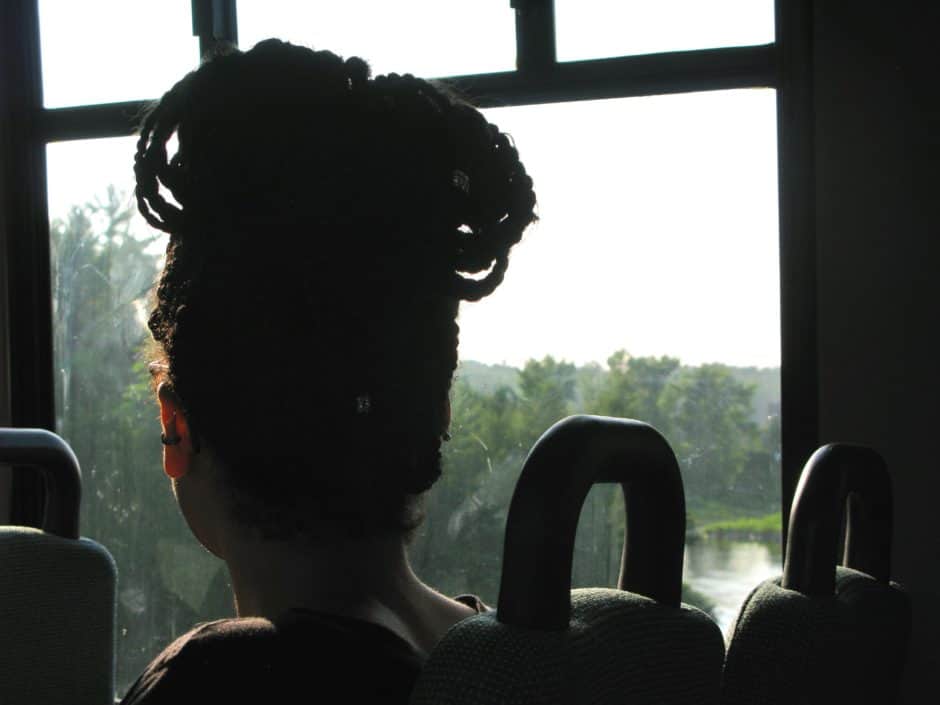
Katy Alambo, our fearless Youth Leadership Coordinator
gazing out the window towards the River
Departing from the Ottawa Riverkeeper office on Friday evening, we were driven by Dave who shared his long history with OWL Rafting mixed in with some Ottawa Valley humour. On our way to the resort, we crossed provincial boundaries over the Chenaux Dam (French plural for channel), one of 71 dams along the Ottawa River built in the 1950s to produce power for Post World War II development. We landed in the village of Portage du Fort (portage of the Strong), where French voyageurs three centuries ago would have trekked overland to avoid the force of the swift rapids at this section of the River. (source1)
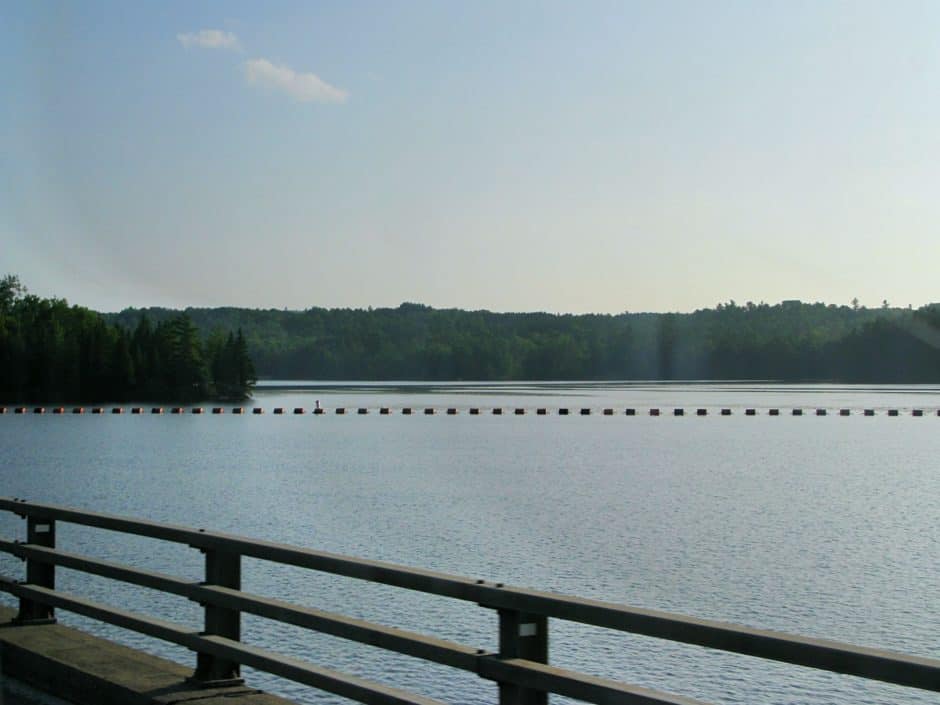
A view overlooking the Ottawa River upstream of the Chenaux Dam
We would not be rafting here, but instead more than 50 kilometers upstream in Forester Falls, at one of a small number of remaining undammed whitewater stretches along the Ottawa River. An OWL rafting review shares that “The Ottawa River offers some of the best whitewater east of the Rockies.” (source 2)
We arrived safely as the sun was beginning to set. An exploratory walk around the resort provided a welcome backdrop for getting to know each other better as fellow Youth Water Leaders. A shared venture onto the water on an oversized paddleboard allowed us to work together as a team. We paddled off into the sunset with oars of all sizes in hand. Soon it would be morning…
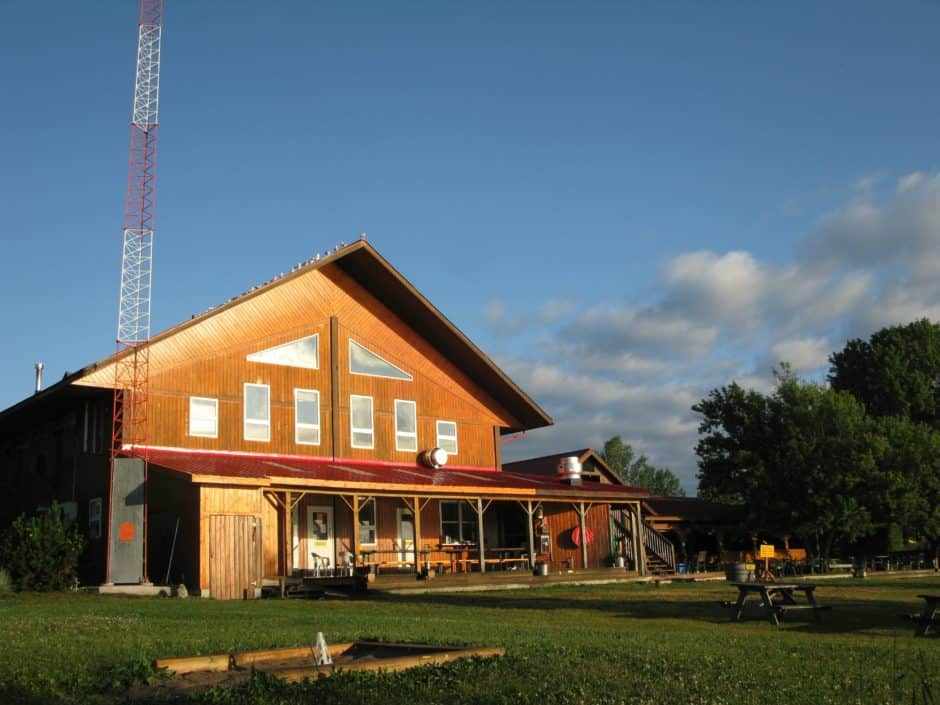
OWL rafting resort overlooking the Ottawa River
“DING DONG”, LAST CALL FOR GROUP A. Group Orientation is beginning “DING DONG”.
Luckily we were in group B, and we still had time for breakfast. At 9AM, our rafting orientation began, guided by Maris who we later found out would be our personal guide. For liability purposes, she reminded us: there is an inherent risk in rafting; OWL is not responsible for injury; there will be sharp rocks in the water; drowning is possible for poor swimmers. These warnings left some of us wondering what we had gotten ourselves into?
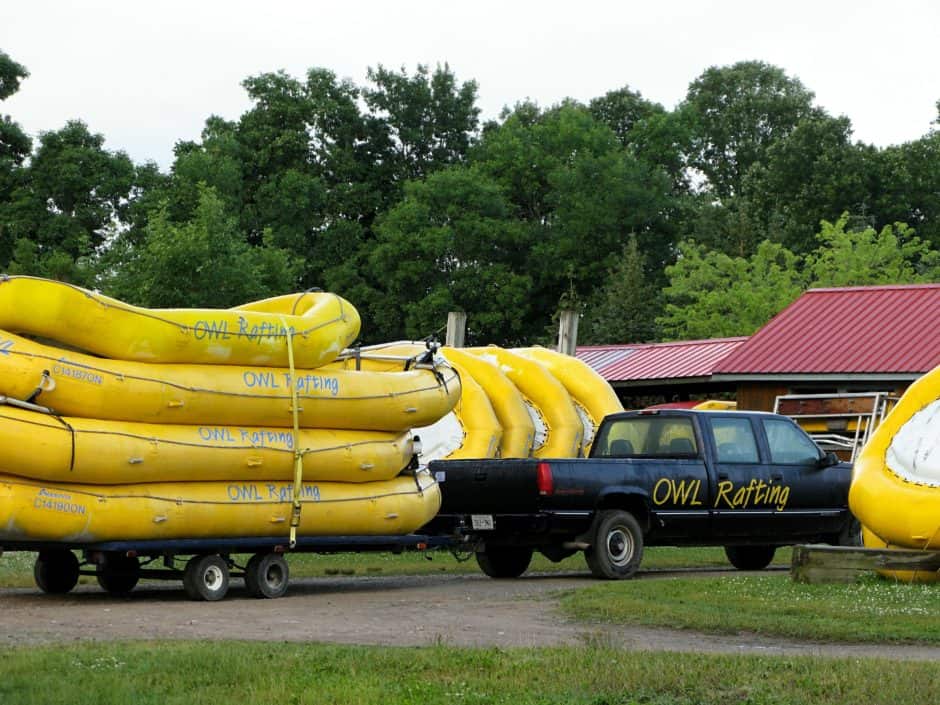
Owl rafts being loaded up to be brought upstream for departure
Before we could rethink our decision, we were suited up in lifejackets, helmets, with paddles in hand. We were loaded on a bus, traveling past farm fields until we reached a calm inlet on the River. Our team shared a sports raft, with three Water Leaders paddling on each side of the raft.
We quickly adapted to following Maris’ sharp commands: “Easy forward, second gear, hard paddle! Backwards left, backwards everyone, stop! Easy forward…” We made it through nine sets of rapids with effortless teamwork, boosting our confidence that remained with us for the rest of the day.
Maris has been leading rafting trips on the Ottawa River for six years, where she has learned not only the unique currents of this stretch of water, but also of the history and ecology of the river itself. Along calm stretches of the river, she challenged us to a game of Ottawa River Trivia. Not surprisingly, we were the first group who could accurately guess the length of the Ottawa River (1271 kilometres).
With a background in ecotourism and sustainability, Maris shared her most important insight from guiding rafts on the Ottawa River: for people to want to protect something, they need to see it, touch it, and experience a personal connection to that thing or place. By rafting along the river, we did just that.
On Sunday, we got to meet with two long-time Riverwatchers Kathy Lindsey and Ole Hendrickson who own cottages nearby on the Ottawa River. Kathy demonstrated microplastic sampling with Ole by scooping sand from the surface of the shoreline. She explained, these samples would be used by a researcher from Carleton University (confirm) to analyze the condition of plastic pollution along the Ottawa River.
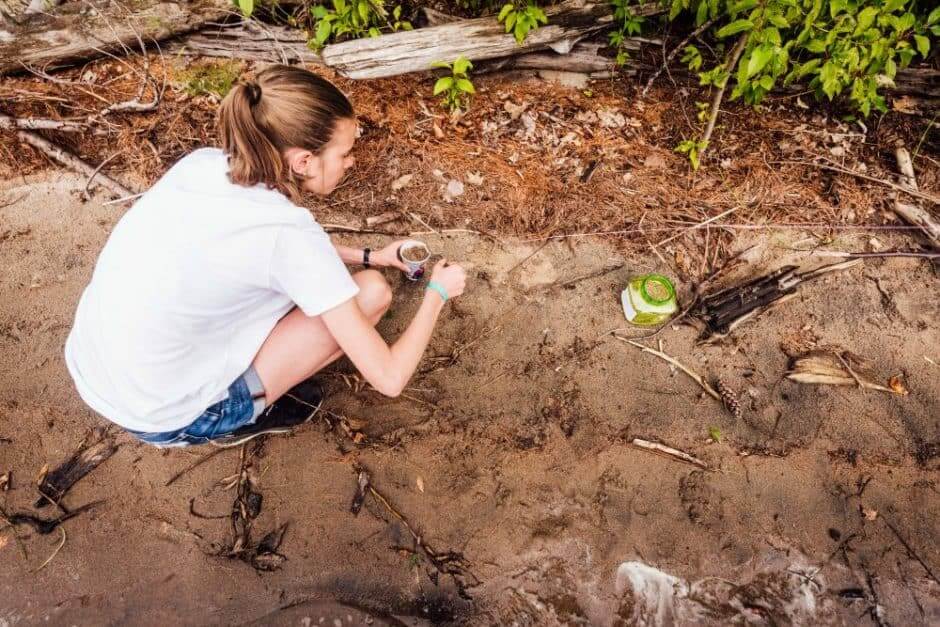
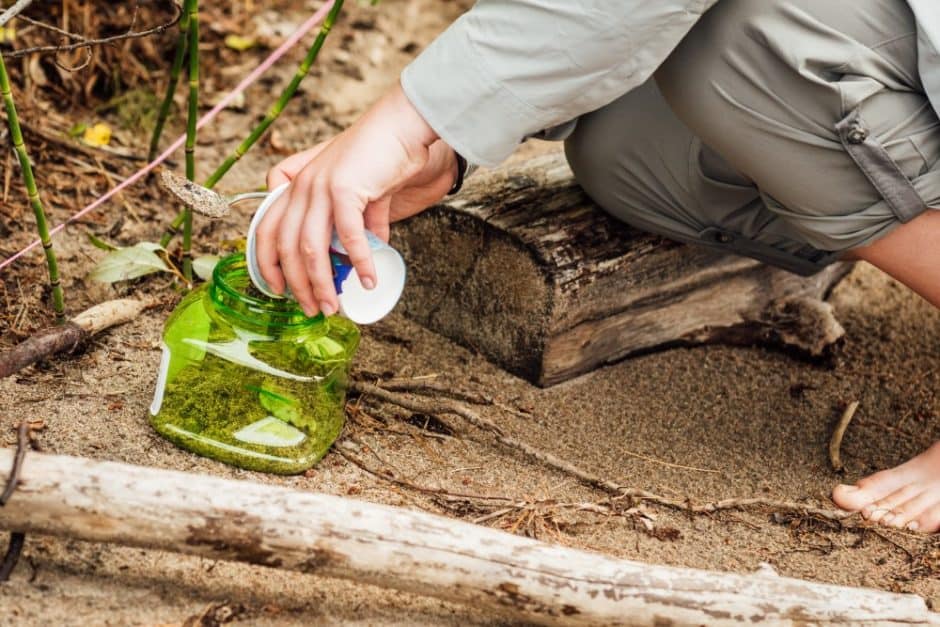
Youth Water Leaders Paige and Charlotte collecting sediment sample for microplastic research
For the rest of the day we engaged in canoe and kayak demos on the water, where we all got to brush up on our paddling skills. We first coupled up for canoeing, and I got to steer a boat with Riverwatcher Kathy, who has paddled with Bill Mason and his daughter Becky!
One by one, we practiced paddling strokes: forward stroke, draw stroke, cross draw stokes, J Stroke, Stern Pry stoke. Some of these strokes are especially useful in learning to paddle a river with unpredictable currents; providing the toolkit necessary to quickly maneuver a canoe in any direction.
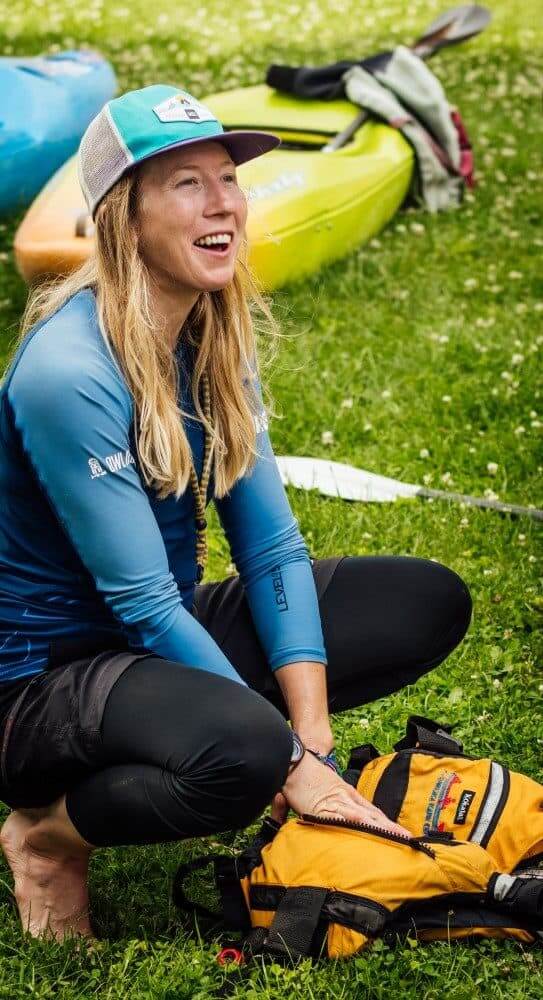
Aly, our enthusiastic paddling guide demonstrating essential water safety
What if all Ottawa residents appreciated the river for what it truly was: a mighty, healthy water body that is the life-force of our communities and cities? What if we all understood our River to be a plentiful supplier of water and food – as it may have once been for our voyageur and indigenous ancestors who spent so much of their lives traveling along this magnificent river?

Canoeing on the Ottawa River as partners
As Youth Water Leaders, it is our hope that more people are able to experience the Ottawa River as we did this weekend – as an irreplaceable source of adventure, beauty, and joy that should be respected and protected.
Source 1 : https://www.ontarioriversalliance.ca/chenaux-generating-station-ottawa-river/
Source 2: https://www.ontariotravel.net/en/play/outdoor-adventures/paddling-and-water-adventures/rafting
< Previous post Next post >